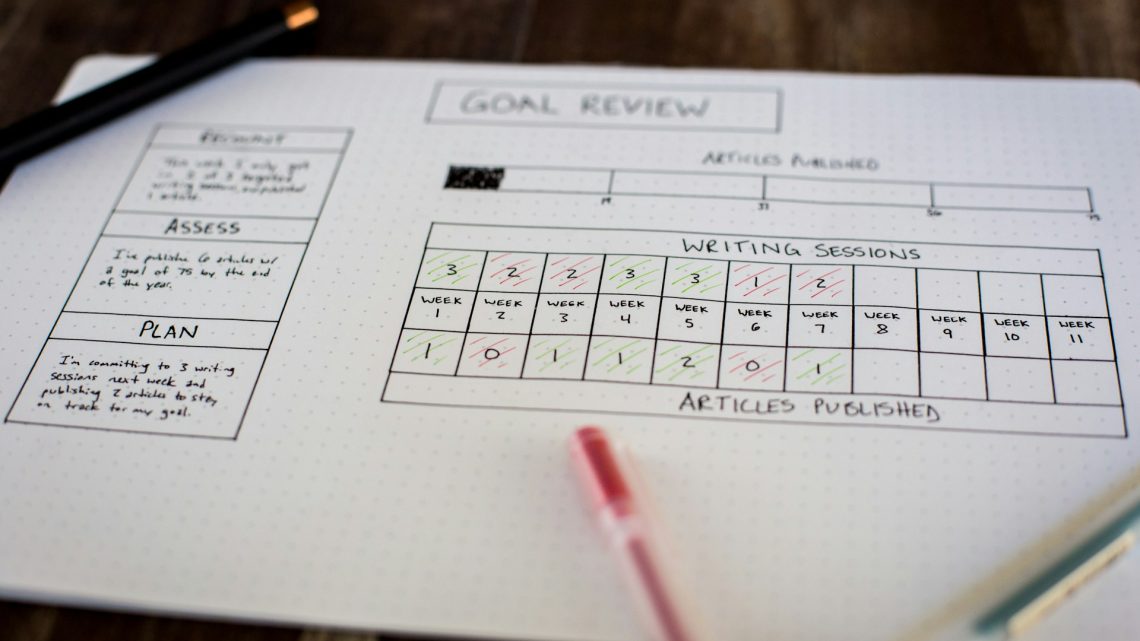
How to Set and Stick to Personal Goals
October 31, 2024Introduction
In our pursuit of growth and success, setting personal goals acts as a guiding light. But simply having a goal isn’t enough; it’s essential to know how to stick to it, too. In this article, we’ll cover everything from defining achievable goals to staying on track, facing setbacks, and keeping yourself accountable.
1. Why Setting Personal Goals Matters
Before setting goals, it’s helpful to understand why they matter:
- Direction and Purpose: Goals provide focus and direction, helping you prioritize what matters most.
- Motivation and Momentum: Personal goals give you something to strive for, fueling motivation.
- Growth and Self-Improvement: By setting goals, you challenge yourself and grow, both personally and professionally.
2. Identify What Truly Matters to You
To set goals that genuinely motivate you, reflect on your core values and passions. Ask yourself:
- What areas of my life do I want to improve?
- What activities make me feel fulfilled and happy?
- What dreams have I postponed due to other responsibilities?
This reflection ensures that your goals align with your values, making them more meaningful and rewarding.
3. Define Clear, Specific Goals
Specificity is key to effective goal-setting. Use the SMART criteria:
- Specific: Clearly define what you want to achieve.
- Measurable: Quantify your goal so you can track your progress.
- Achievable: Ensure the goal is realistic within your current resources.
- Relevant: The goal should align with your values and long-term objectives.
- Time-Bound: Set a deadline to stay motivated and focused.
Example of a SMART Goal
If you want to improve your health, a SMART goal might be, “I will work out three times a week for 30 minutes each session over the next three months to improve my fitness level.”
4. Break Down Big Goals into Smaller Steps
Large goals can feel overwhelming. To make them more manageable:
- Divide the Goal: Break it down into smaller, actionable steps. For instance, if your goal is to learn a new language, start with learning 10 new words a day.
- Set Milestones: Celebrate small victories along the way. These checkpoints keep you motivated and allow you to gauge progress.
Breaking down a goal makes it less daunting, helping you make steady progress rather than feeling intimidated by the end result.
5. Develop a Plan of Action
Once you’ve broken down your goals, create a step-by-step plan:
- Create a Timeline: Map out when you’ll complete each step.
- Set Reminders: Use tools like calendar alerts or habit-tracking apps to keep you on schedule.
- Anticipate Obstacles: Identify potential challenges and how you might overcome them.
A clear plan reduces uncertainty and keeps you focused on what’s next, ensuring that you’re not just drifting.
6. Build Consistent Habits Around Your Goals
Habits are powerful in helping you reach your goals without depleting your willpower:
- Start Small: Begin with habits that are easy to maintain and gradually increase them over time.
- Attach Habits to Existing Routines: For example, if your goal is to meditate daily, attach it to your morning coffee routine.
- Reward Progress: Give yourself a small reward when you maintain a habit over a period, reinforcing your behavior.
Building supportive habits simplifies the path to achieving your goal, as consistent actions become part of your daily routine.
7. Track Your Progress Regularly
Tracking keeps you accountable and helps you stay motivated:
- Use a Journal or App: Write down your daily or weekly progress.
- Reflect on Setbacks: Instead of feeling discouraged by failures, treat them as learning experiences.
- Adjust Your Plan as Needed: Goals are flexible, so feel free to adjust if your priorities change or if you find a more efficient approach.
Consistently monitoring your progress will remind you of how far you’ve come and keep your commitment strong.
8. Overcome Self-Doubt and Procrastination
Self-doubt and procrastination are common obstacles:
- Address Self-Doubt with Affirmations: Remind yourself why you’re capable and deserving of success.
- Visualize Your Success: Picture how achieving the goal will impact your life positively.
- Combat Procrastination with the 5-Minute Rule: Tell yourself to work on a task for just five minutes. Often, getting started is the hardest part, and once you begin, momentum builds.
Taking small actions even when you’re hesitant creates resilience and reduces the hold of procrastination.
9. Find Accountability
Having someone to support your journey can boost your chances of success:
- Tell a Friend: Share your goals with someone who will check in with you.
- Join a Group: Look for communities of people working toward similar goals, where you can share tips and challenges.
- Work with a Mentor or Coach: An experienced guide can provide invaluable feedback and help you stay on track.
Being accountable to someone besides yourself adds a layer of responsibility, making it less likely you’ll give up on your goals.
10. Celebrate Your Achievements Along the Way
Recognizing your progress is essential for long-term motivation:
- Reward Milestones: Each time you reach a milestone, give yourself a treat or experience that makes you happy.
- Reflect on Growth: Consider not only what you’ve achieved but also how you’ve grown. Personal goals often lead to self-discovery and resilience.
- Stay Grateful for the Journey: Even if you haven’t reached your end goal, recognize the value of the journey itself.
Celebrating small victories keeps the process enjoyable and reinforces the progress you’ve made, inspiring you to keep going.
Conclusion
Setting and sticking to personal goals is a transformative practice that requires intention, perseverance, and a commitment to growth. By following these steps—identifying your passions, creating a clear plan, building habits, and staying accountable—you’ll be well on your way to turning your dreams into reality.

